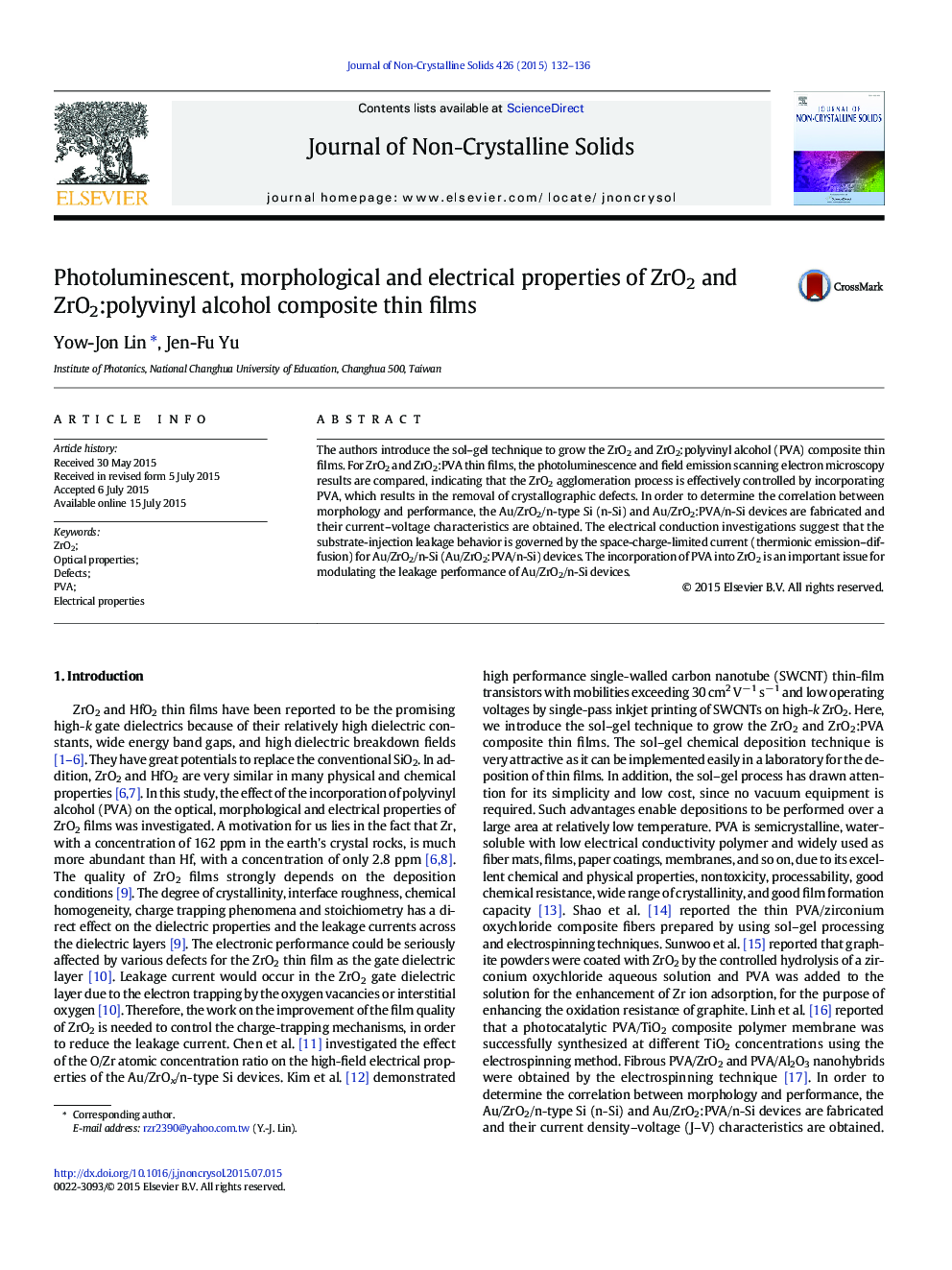| Article ID | Journal | Published Year | Pages | File Type |
|---|---|---|---|---|
| 1480603 | Journal of Non-Crystalline Solids | 2015 | 5 Pages |
•The weakened ZrO2 agglomeration by incorporating polyvinyl alcohol (PVA) is found.•The incorporation of PVA leads to the removal of crystallographic defects.•The induced strong steric effect by incorporating PVA into ZrO2 is shown.•The effect of PVA on the electrical property of Au/ZrO2/Si devices is researched.•The incorporation of PVA into ZrO2 leads to the conversion of leakage behavior.
The authors introduce the sol–gel technique to grow the ZrO2 and ZrO2:polyvinyl alcohol (PVA) composite thin films. For ZrO2 and ZrO2:PVA thin films, the photoluminescence and field emission scanning electron microscopy results are compared, indicating that the ZrO2 agglomeration process is effectively controlled by incorporating PVA, which results in the removal of crystallographic defects. In order to determine the correlation between morphology and performance, the Au/ZrO2/n-type Si (n-Si) and Au/ZrO2:PVA/n-Si devices are fabricated and their current–voltage characteristics are obtained. The electrical conduction investigations suggest that the substrate-injection leakage behavior is governed by the space-charge-limited current (thermionic emission–diffusion) for Au/ZrO2/n-Si (Au/ZrO2:PVA/n-Si) devices. The incorporation of PVA into ZrO2 is an important issue for modulating the leakage performance of Au/ZrO2/n-Si devices.
